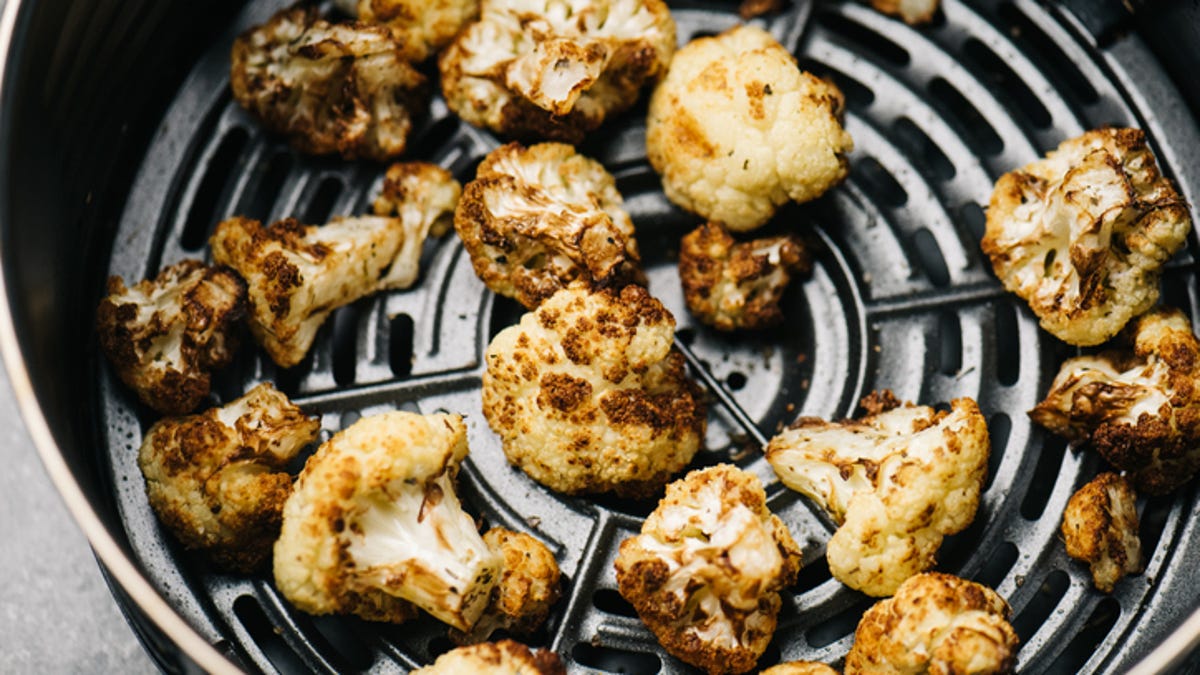Air fryers are proving to be more than just a gadget for crisping up chicken wings; they excel at preparing vegetables too. If you’re tired of serving unappealing, mushy greens that your family avoids, consider revamping your cooking style. The air fryer offers a magical transformation, turning vegetables into crispy, flavorful bites that your guests or family members may devour before the main dish even arrives. This handy kitchen appliance can make vegetables not only tolerable but genuinely delicious.
To gain insights on the best vegetables to cook in an air fryer, I spoke with Ryan Ratino, the executive chef at Four Seasons in Fort Lauderdale. Ratino emphasized that, while restaurants may not use air fryers, the high-powered combo ovens they employ share similarities in cooking techniques under the right settings.
“We may not use an air fryer in the restaurant, but we do use high-powered combo ovens that, under the right settings, are very similar,” he explained.
Best Vegetables for Air Frying
According to Ratino, many vegetables are suitable for air frying, but some kinds shine brighter than others. Here’s a breakdown of the best options:
1. Potatoes and Starchy Vegetables:
Potatoes, sweet potatoes, yucca, plantains, and mushrooms are among the top performers in the air fryer. Their starch content helps them withstand high temperatures while retaining moisture, helping produce a crispy exterior.
2. Brussels Sprouts, Green Beans, Zucchini, Eggplant, and Onions:
With their layers and thick skins, these vegetables can handle the extreme conditions of air frying. They produce delicious results, making them ideal candidates. Interestingly, cauliflower is an exception to the fibrous rule typically associated with air frying due to its dense structure and moisture content.
3. Fibrous Vegetables to Avoid:
While you can toss broccoli and asparagus into the air fryer, Ratino cautions that they tend to dry out quickly. “These dry out too fast before browning and give you a poor texture,” he noted. If you choose to use these vegetables, covering them with foil can help prevent burning or drying out.
Tips for Perfect Air-Fried Vegetables
Ratino shared several essential tips to elevate your air-fried vegetable game:
– Blanch Before Air Frying:
One of the most crucial steps is to blanch your veggies. This technique retains moisture while ensuring even browning. To blanch, bring a pot of water to a boil, add your vegetables for one to five minutes (until they become vibrantly colored), and then plunge them into a bowl of ice water. After they cool, drain and dry them thoroughly before cooking.
– Use Light Oil and Coatings:
To enhance crunchiness and moisture retention, Ratino suggests spritzing your vegetables lightly with oil and adding a topping like French-fried onions. Don’t hesitate to experiment with other textures and flavors using panko, breadcrumbs, crushed crackers, or even pork rinds to enrich your dishes.
Weighing the Benefits and Drawbacks
Air fryers come with distinct advantages, predominantly in terms of cooking time, color, and texture. Ratino is a fan of the time-saving benefits, noting that while traditional frying methods may yield consistently richer results, air frying allows for quicker meals and more time to enjoy them.
However, it’s essential to keep an eye on cooking times and temperatures, as air fryers can dry out food faster than expected, requiring some trial and error. Additionally, air fryers can be challenging to clean over time due to the volume of food they process in their compact spaces.
In conclusion, despite these challenges, air fryers have become indispensable in modern kitchens, providing a convenient way to meet daily vegetable serving recommendations from nutrition guidelines. Whether you’re aiming to enhance family meals or impress dinner guests, air frying vegetables can put a delightful twist on your culinary endeavors.






